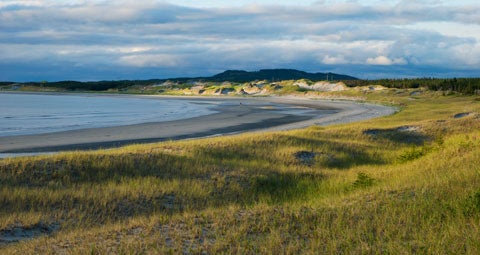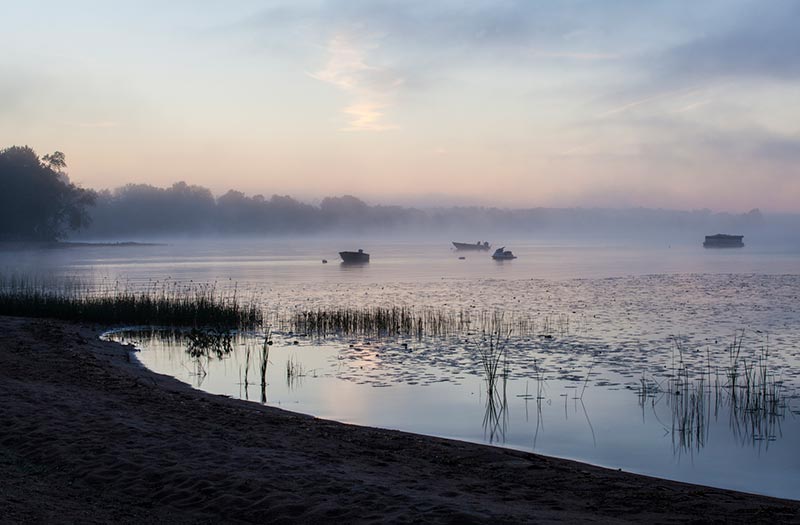
The strip of moisture-loving trees, shrubs and herbaceous plants along the edge of a lake, river, wetland or other watery habitat is called the buffer zone. This ribbon of life enhances the beauty of the shoreline, shades and prevents the heating of water which can kill aquatic creatures, protects water quality by filtering the run-off of pollutants like fertilizers and pesticides from land, controls soil erosion, which muddies streams and ruins fish spawning habitat, and provides food, cover and nesting sites for a rich variety of life forms on land and in water.
The wider the strip (and the more lush, diverse and deeply rooted its vegetation), the greater its ability to work as a buffer and life-support system. Chances are, logging, construction, agriculture or other activities have damaged one of these areas in your community. Here’s how you can help revitalize a ribbon of life:
- Base your strategy on the amount of vegetation missing and the extent of erosion along your shoreline. Exposed, collapsed banks demand immediate attention.
- Survey your site and the surrounding area to see what plants already grow there. Many will be suitable for transplanting or as sources of seeds and cuttings to plant in the disturbed area.
- Choose a variety of native plants adapted to local conditions. They are favoured by wildlife and more resistant to disease and drought than non-native species. Keep in mind the sun, shade, soil and moisture requirements of plants. For a list of suitable plants, request a copy of the “Shoreline Planting Chart” from the Canadian Wildlife Federation.
- chipmunk green frog, after the last frost. For seedling stock, prepare a hole deep enough for a root system, plant each tree ensuring that there are no air pockets, and use your heel to pack the ground down around the stem.
- An effective alternative to planting seedlings, especially on larger shorelines, is to propagate vegetation from tree and shrub cuttings harvested from local sites. During late winter dormancy, before the buds sprout, collect shoots of wildlife favourites, like balsam-poplar, elderberry, serviceberry, redosier dogwood, and sandbar-willow. Use a sharp knife to cut lengths of 20 to 25 cm, trimming one end at an angle. Each cutting should have at least three healthy buds. After spring thaw, before the buds open, poke a hole in the ground and push the angled end of each cutting into the soil, leaving only three centimetres above the surface and packing earth around the shoot. Larger cuttings, or “poles”, two metres in length and five to 10 centimetres in diameter, are also useful for stabilizing eroding banks. Push each pole one metre into the shoreline, or drive it in with a rubber mallet if the soil is too hard. Heavy vegetative growth should appear on cuttings and posts by midsummer.
- The ideal buffer strip extends a minimum of 30 metres from the water’s edge. One model to follow consists of five to 10 zigzagging rows of fast-growing, flood-tolerant trees, like silver maple, Manitoba maple, cottonwood, willow or ash alongside the water, with a 0.75- to 1-metre space between trees and two metres between rows. Plant the inner row just below the highwater mark (about 25 cm from the water’s edge). Fruit and nut-bearing trees, shrubs and vines are also valuable as the inner and outer rows of the buffer strip. Adjacent to the outer row, plant a wide strip of native grasses and legumes. This meeting of vegetative communities will create an “edge effect,” or mingling among wildlife species attracted to different types of plants.
If possible, water during droughts and weed out competing vegetation in the first few years.






